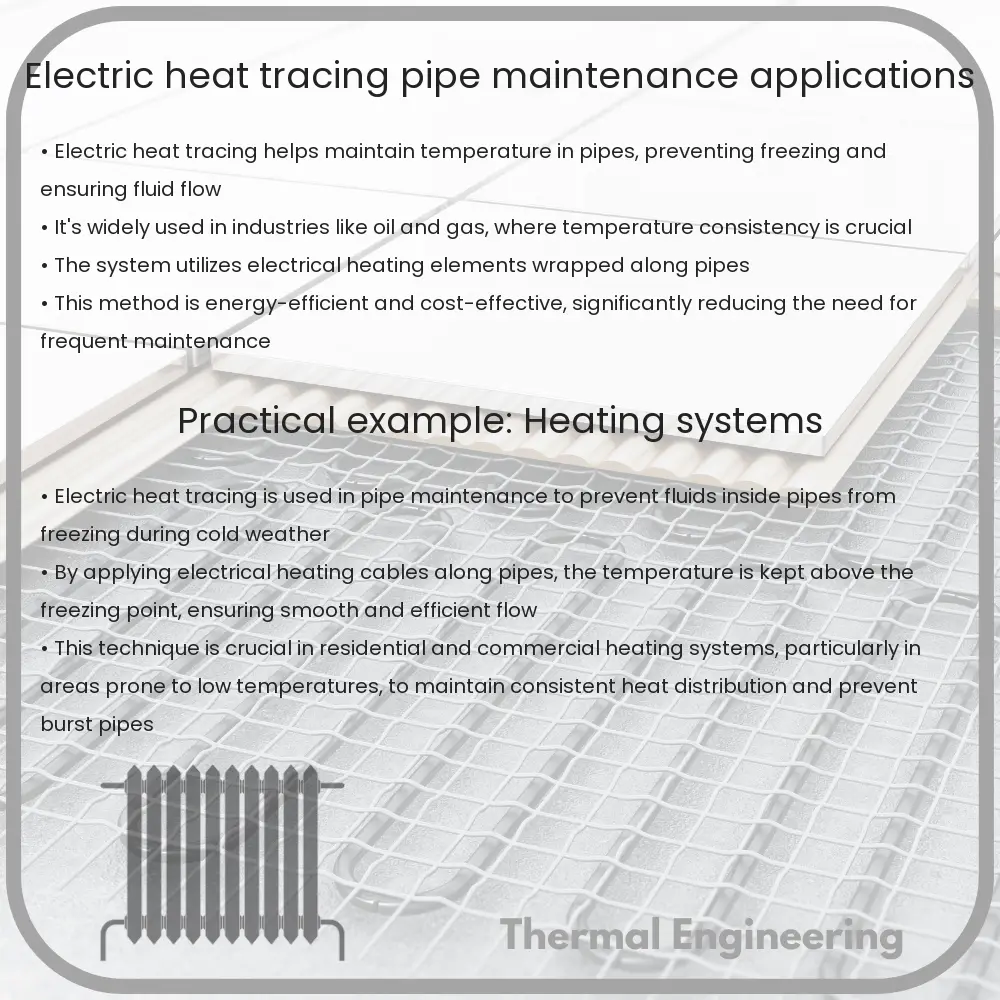Learn about electric heat tracing, a system used to maintain or raise the temperature of pipes and vessels in various industries.

Electric Heat Tracing: Ensuring Efficiency in Pipe Maintenance
Electric heat tracing is a system used to maintain or raise the temperature of pipes and vessels. This technology is critical in a variety of industrial applications where temperature maintenance is crucial, particularly in preventing the freezing of fluids in pipes, maintaining fluid viscosity, or providing comfort heating in buildings. Let’s explore how electric heat tracing works and its applications in pipe maintenance.
How Does Electric Heat Tracing Work?
Electric heat tracing, also known as electric trace heating, involves using electrical heating elements – either cables or tapes – that are run alongside pipes or vessels. These elements are controlled by thermostatic devices to ensure heat is provided only when needed and in the required amounts. The basic components of an electric heat tracing system include:
- Heating cables (self-regulating or constant wattage)
- Connection kits and end seals
- Thermal insulation
- Control systems (like thermostats or advanced control panels)
The choice between self-regulating and constant wattage cables depends on the application requirements. Self-regulating cables adjust their power output in response to temperature changes along the pipe, whereas constant wattage cables deliver a fixed amount of heat per unit length irrespective of pipe temperature.
Applications in Pipe Maintenance
Electric heat tracing systems are used extensively for pipe maintenance in various industries, including oil and gas, chemical manufacturing, food and beverage, and water treatment facilities. Key applications include:
- Freeze Protection: In colder climates, water or other fluids in pipes can freeze, causing damage or rupture. Electric heat tracing maintains a consistent temperature to prevent freezing.
- Temperature Maintenance: Certain industrial processes require fluids to be kept at a specific temperature to ensure viscosity is maintained, facilitating easy flow and processing.
- Condensation Prevention: In systems handling steam or high humidity fluids, electric heat tracing helps in preventing condensation which can lead to pipe corrosion or quality deterioration in process fluids.
Benefits of Electric Heat Tracing
Compared to traditional methods like steam tracing, electric heat tracing offers several advantages:
- Energy Efficiency: Electric heat tracing provides heat where and when it is needed, reducing energy consumption compared to continuous steam heating.
- Lower Maintenance: Electric systems have fewer moving parts and do not require the extensive maintenance regime that steam systems do.
- Easy Installation and Control: Modern electric heat tracing systems are easier to install and integrate with automated control systems to provide precise temperature management.
- Safety: Electric heat tracing reduces risks associated with handling high-pressure steam and minimizes leakage concerns.
Conclusion
As industries strive to improve the reliability and efficiency of their processes, the role of technologies like electric heat tracing becomes ever more critical. With its ability to maintain necessary temperatures efficiently and safely, electric heat tracing is a modern solution that supports vital industries and helps prevent the costly downtime that can result from unmanaged thermal variations.
Understanding and implementing an effective electric heat tracing system could essentially ensure smoother operations in facilities that depend heavily on proper pipe maintenance, thereby enhancing overall operational efficiency.